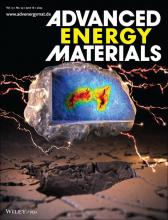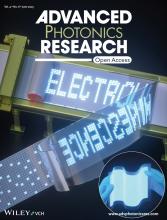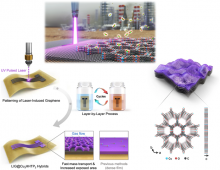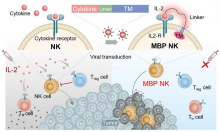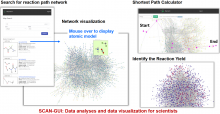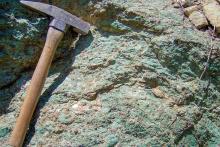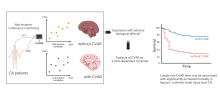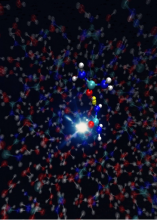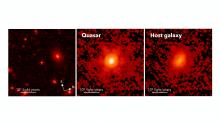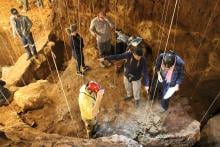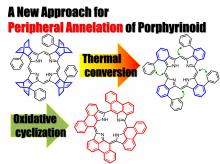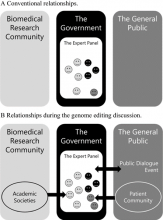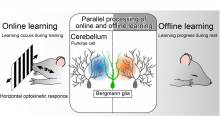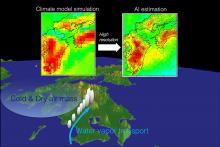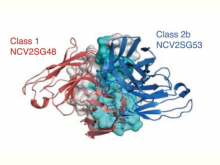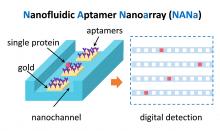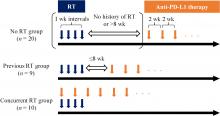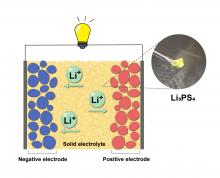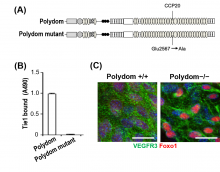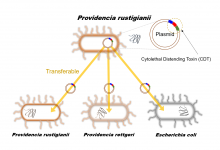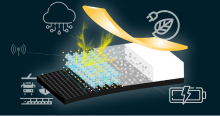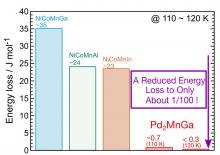Peer Reviewed
News
04 Jul 2023
- A research team led by Dr. Byeong-dae Choi at the Division of Electronics & Information System, DGIST, greatly improved the efficiency of electroluminescent devices by applying silver nanofilms.
- This opens up the possibility of developing affordable digital film signage.
04 Jul 2023
- A research team led by Professor Hyuk-jun Kwon, a DGIST Professor, successfully developed a graphene-metal organic framework hybrid structure with hierarchical porosity
- A technology capable of detecting extremely low concentrations of nitrogen dioxide at the level of one billionth in real-time... Expected to be applied to next-generation healthcare devices
04 Jul 2023
- Joint research team of DGIST Professor JeongHo Kwak and KAIST Professor Jihwan Choi develops a network slicing planning and handover technique for next-generation 6G low LEO satellite networks
- This work is expected to contribute to various services using satellite networks in the era of 6G satellite networks in the future such as Starlink and OneWeb
04 Jul 2023
A new method for connecting neurons in neuromorphic wetware has been developed by researchers from Osaka University and Hokkaido University. The wetware comprises conductive polymer wires grown in a three-dimensional configuration, done by applying square-wave voltage to electrodes submerged in a precursor solution. The voltage can modify wire conductance, allowing the network to be trained. This fabricated network is able to perform unsupervised Hebbian learning and spike-based learning.
04 Jul 2023
- Principal Researcher Jinhyo Yun’s team at the DGIST publishes a comparative study on South Korea and Italy using the commons as a business model in one of the top international journals
- This work opens new prospects in sustainable capitalism
04 Jul 2023
- Professor Minseok Kim’s team at the DGIST confirmed the excellent anticancer effects of the NK cell therapy product that can self-activate in preclinical trials with CT Cells
- This work is expected to be applied in various fields as a next-generation anticancer therapy using NK cells
04 Jul 2023
DGIST (academia), Samsung C&T Corporation (industry), and MFR (research) entered into an MOU to conduct joint research on high-tech construction automation
04 Jul 2023
DGIST published a comparative study of the smart payment industry in Korea, China, and the UK in a top international journal
03 Jul 2023
A new online platform to explore computationally calculated chemical reaction pathways has been released, allowing for in-depth understanding and design of chemical reactions.
03 Jul 2023
An international research team has discovered that a subduction zone’s age affects the ability for it to recycle water between the Earth’s surface and its inner layers. The more mature the subduction zone, the bigger the water storage capacity.
03 Jul 2023
A group of researchers at Osaka University used a noninvasive method to evaluate Cerebrovascular Autoregulation (CVAR) in patients after out-of-hospital cardiac arrest. The mortality rate increased significantly with the duration of time that CVAR was undetectable.
It has been suggested that CVAR, a function that is normally present in the normal state, may be impaired after cardiac resuscitation. However, the relationship between CVAR function and patient prognosis has been unclear. The research examined CVAR over time, using the moving Pearson correlation coefficient calculated from regional cerebral oxygen saturation and mean blood pressure data, and performed a survival analysis using the presence or absence of CVAR as a time-dependent covariate.
The findings of this study may first be useful in predicting neuroprognosis after cardiac resumption and may help avoid early withdrawal of treatment in those who may recover. In addition, they suggest that treatment and management that maintains proper CVAR after cardiac resumption may improve patient prognosis, which may be applied to the management of post-cardiac arrest resuscitation based on cerebral circulation to optimize treatment for each individual patient.
29 Jun 2023
New technological development has provided further clues about the origins of life on Earth. An international research group invented an innovative X-ray spectroscopy approach that enabled them to recreate the chemical reactions occurring in liquids at the femtosecond level (a quadrillionth part of a second). They used this to examine ureas—an organic compound that underwent ionization to form some of the building blocks of life.
28 Jun 2023
For the first time, the James Webb Space Telescope has revealed starlight from two massive galaxies hosting actively growing black holes – quasars – seen less than a billion years after the Big Bang.
28 Jun 2023
New findings from a cave in northern Laos add to a growing body of evidence that modern humans arrived in Southeast Asia over 80,000 years ago, tens of thousands of years earlier than previously thought.
28 Jun 2023
A New Approach for Peripheral Annelation of Porphyrinoid
28 Jun 2023
Researchers from Osaka University analyzed discussions on research governance of human genome editing in the Expert Panel on Bioethics in Japan and identified the positive roles played by related research communities, the government, and the general public in the policy-making process. It is expected to provide more effective and practical guidance for countries and organizations seeking to work with diverse stakeholders in the governance of emerging medical technologies.
28 Jun 2023
Researchers from Osaka University have revealed the mechanism by which increased signaling through a pathway associated with a molecule called Wnt leads to the development of liver cancer. They identified a gene called GREB1 as a target of Wnt specifically in liver cancer. This gene alters the function of a protein called HNF4α, leading to the development of cancer. They also showed that treatment of mice with antisense oligonucleotides against GREB1 had significant anti-cancer effects.
27 Jun 2023
Have you ever studied hard for a test the night before, only to fail miserably the next day? Alternatively, you may have felt unconfident after studying the night before when, to your astonishment, you recall effortless the content on test day. This discrepancy may be down to the separate and independent way in which our brain processes short- and long-term memory, Tohoku University researchers have revealed.
27 Jun 2023
Researchers from the Institute of Industrial Science (The University of Tokyo) have developed a high-resolution method for climate model simulation.
26 Jun 2023
What scientists learned about the rare antibodies targeting SARS-CoV-2’s Achilles’ heel could help fine-tune our COVID-19 vaccine strategy for longer-lasting immunity.
23 Jun 2023
An international team led by Professor Yan Xu from Osaka Metropolitan University has developed a groundbreaking nanofluidic device, named NANa, capable of stochastically capturing and digitally detecting individual proteins at cellular concentrations. This tool, vital for precision medicine, is designed to handle tiny volumes equivalent to a single cell's contents and can identify single biomolecules even in high-concentration environments. The team plans to conduct further demonstrations using actual cell samples and explore the integration of this tool with AI and biological big data. This research could potentially revolutionize personalized disease prevention and treatment.
23 Jun 2023
A combination of radiotherapy followed by immunotherapy is a promising strategy for the treatment of oral malignant melanomas in dogs.
22 Jun 2023
Researchers from SANKEN (The Institute of Scientific and Industrial Research), at Osaka University demonstrated a method for drying cellulose nanofiber (CNF) that retains the unique properties of the thickening agent. High transparency, high viscosity, and controllable viscosity were restored with simple stirring after the CNF was dehydrated from an organogel. Our powder had a much smaller volume than freeze-dried CNF, which will facilitate more efficient transport and storage. The method is expected to have a significant impact on food and cosmetics manufacturing.
21 Jun 2023
Osaka Metropolitan University researchers succeeded, for the first time, in stabilizing the high-temperature phase of Li3PS4—a solid electrolyte material¬¬—thus attaining high ionic conductivity even at room temperature, using a method of rapid heating during its crystallization. This unprecedented achievement is expected to contribute to the development of materials for all-solid-state batteries with higher performance.
19 Jun 2023
Researchers from Osaka University found that the binding of two proteins—Polydom and Tie1—is essential for lymphatic cell migration in the remodeling of lymphatic vessels, which transport molecules around the body. A better understanding of the development and remodeling of the lymphatic system will lead to better therapeutic options for diseases such as lymphedema, which is common in cancer patients and currently has no cure.
15 Jun 2023
A joint research group led by Osaka Metropolitan University has clarified how pathogenic genes in some Providencia spp., which have gained attention as causative agents of food poisoning as well as enterohemorrhagic Escherichia coli. O157 and Salmonella, are transferred within bacterial cells. Their findings are expected to provide new insights into the identification of infection routes of Providencia spp. and the establishment of preventive methods for food poisoning.
15 Jun 2023
An international research group has engineered a new energy-generating device by combining piezoelectric composites with carbon fiber-reinforced polymer (CFRP), a commonly used material that is both light and strong. The new device transforms vibrations from the surrounding environment into electricity, providing an efficient and reliable means for self-powered sensors.
14 Jun 2023
A physicist from the University of the Philippines – Diliman College of Science National Institute of Physics (UPD-CS NIP) led a team of researchers in pioneering a way to make a special kind of “dark” matter that can’t be observed using standard laboratory methods.
13 Jun 2023
Metamagnetic shape memory alloys (MMSMA) have negated some of the common problems associated with shape memory alloys thanks to their ability to undergo phase transformation when exposed to an external magnetic field. Yet they still lose a large amount of energy when phase transforming. Now, a research group from Tohoku University has made a significant breakthrough, developing a palladium-based MMSMA that exhibits low energy loss.
Events
Sorry, no events coming up for this topic.
Researchers
Sorry, no researchers coming up for this topic.
Giants in history
Sorry, no researchers coming up for this topic.


